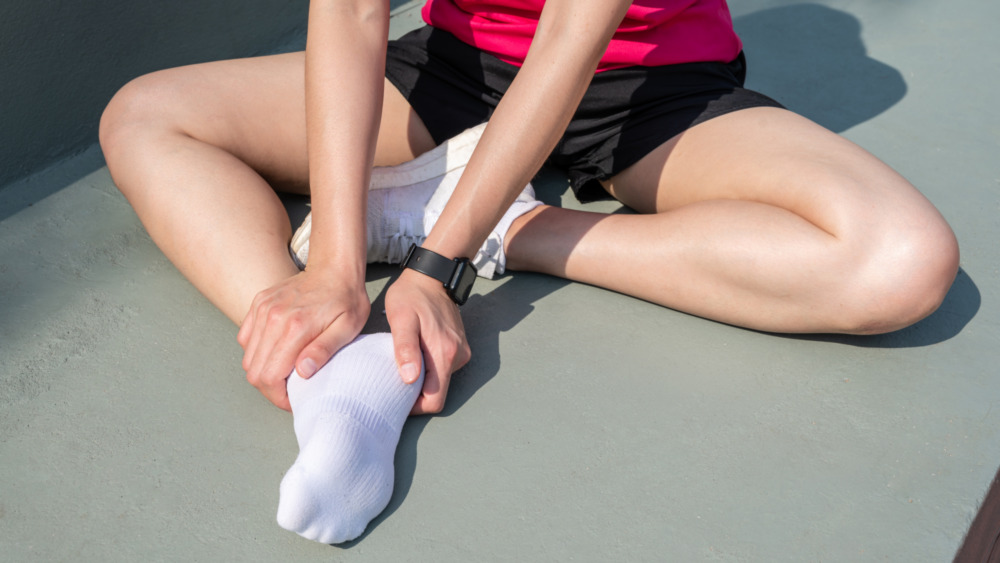Here's The Easiest Way To Check Your Circulation
Obviously, getting blood to the appropriate places in your body is a vital part of your system's functioning. Your circulation levels can point to areas that aren't getting what they need to function properly; as such, checking it is a valuable tool to ensure that things are running smoothly beneath your skin. According to Mindbodygreen, your circulatory system contains nearly 60,000 miles of blood vessels that work as a network to keep your body moving. Keeping tabs on it is a good idea.
Of course, you can go to your doctor to check out how your circulation is doing, but a few easy tricks can tell you how well your blood is moving. The first place to check, the outlet suggests, is underneath your eyelids. The blood vessels in this area are easily visible, meaning that you can see if they look broken. However, having broken blood vessels in your eyes isn't always a classic sign of poor circulation, but you may want to check there to start.
Another easy-to-spot place to look is your skin. The outlet reports that your skin tone should be a giveaway as to how your circulatory system is functioning. To quickly check the rate at which your heart is pumping blood, press down on an area of skin to constrict the flow and then watch how quickly the color comes back after you stop pressing. If it takes a few seconds for your skin to look normal again, your circulation may be suffering.
Poor circulation can also cause physical discomfort
Signs of a lagging circulatory system may arise during your daily experience as well. Feeling numb or tingly in your extremities may denote poor circulation as well as muscle cramps and pain in different areas of your body, Healthline explains. As for the causes of poor circulation, there are a few underlying conditions that you may want to check for if you think your blood flow is slower than it should be.
For instance, blood clots in your arms or legs can slow the system down to dangerous levels. Varicose veins also point to a circulatory issue that can impact your health in negative ways. Peripheral Artery Disease narrows the blood vessels in your extremities which inhibits the healthy flow of blood from one area of your body to the next, the outlet reports. Furthermore, diabetes can also cause symptoms of poor circulation, so it's important to speak with your doctor about ways to support this system.
Luckily, you can perform various exercises and use different tools to keep things flowing in your body. Medical News Today recommends taking yoga classes, consuming fatty fish such as salmon and tuna as well as jogging to keep a healthy rate of circulation. Of course, check with your doctor if you suspect something is off, but know that you can do a home test for a quick gauge of where things are at.

